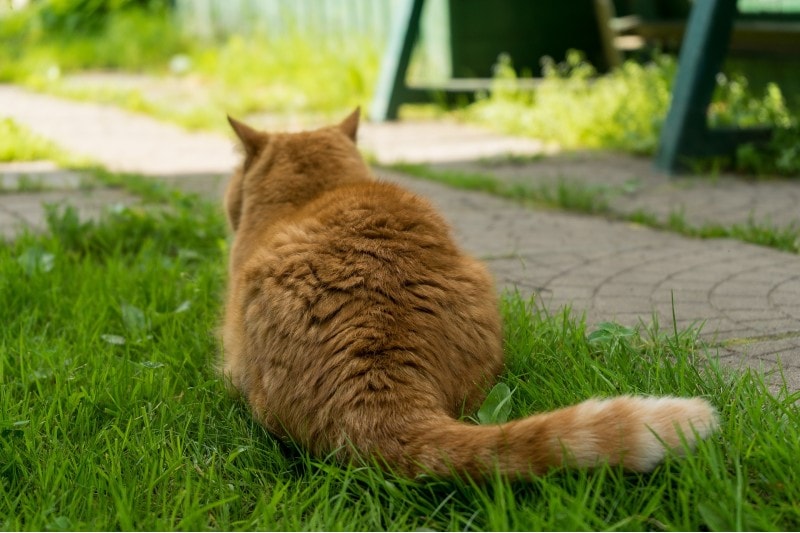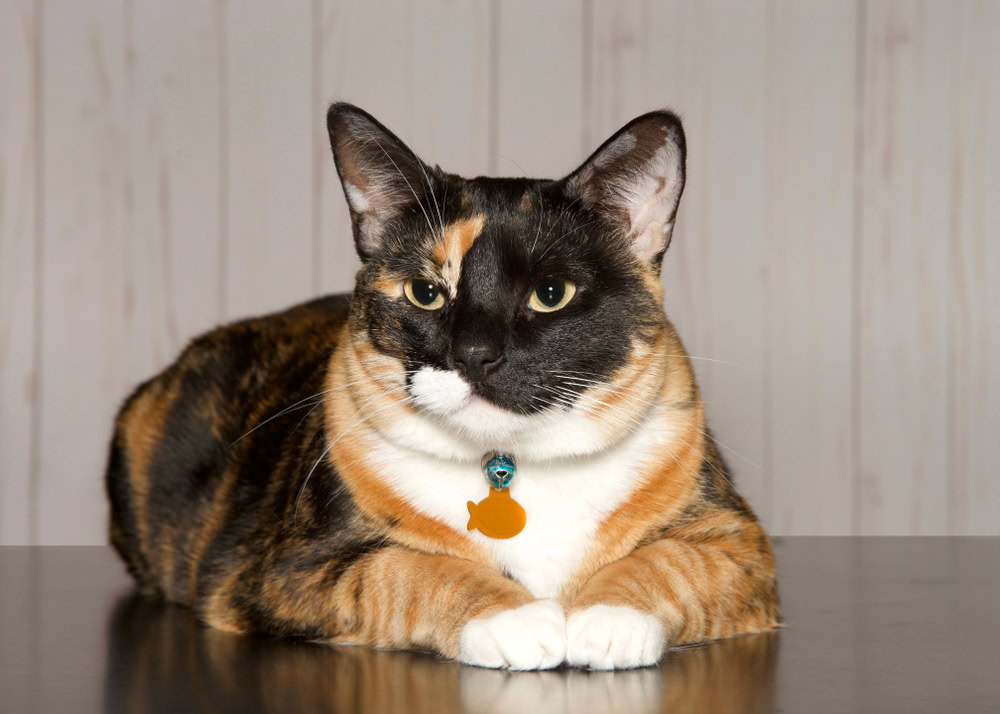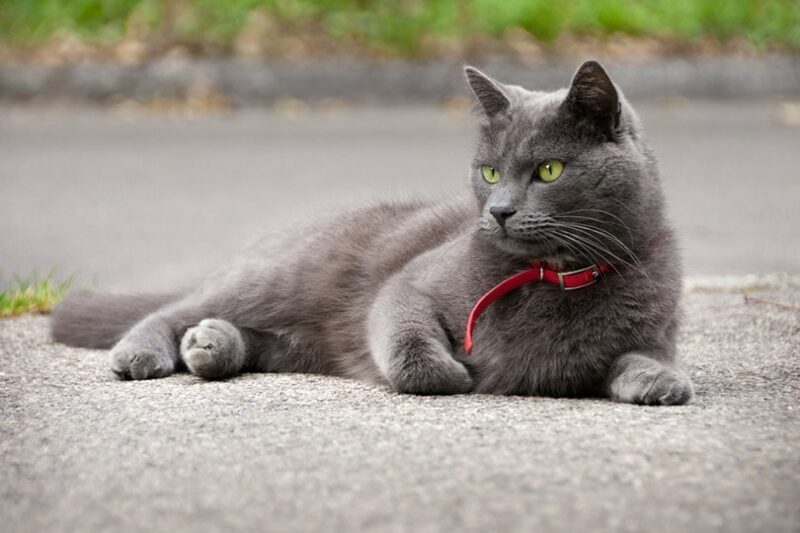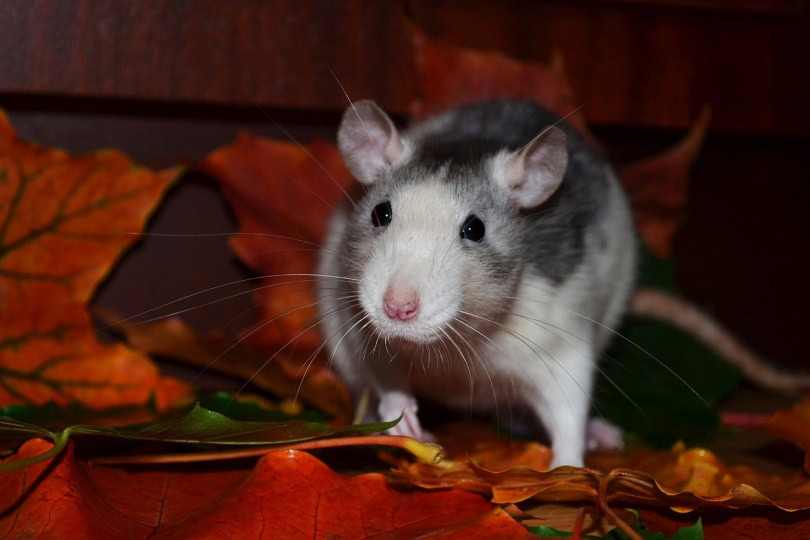VET APPROVED

The information is current and up-to-date in accordance with the latest veterinarian research.
Learn more »Cats’ tails do all sorts of interesting things. Kitties use their tails to help them balance when they’re perched on high tree limbs and to engage with other animals. Cats even use their tails to communicate with people. A cat with a tail that’s standing nice and tall is probably happy to see you.
However, you might want to reconsider whatever you’ve done to annoy your pet if they start sharply flicking the end of their tail while staring at you. And while most cats have tails, some breeds are naturally tailless, like the Manx. Others, such as the American Bobtail, tend to have short stumps that seldom grow longer than 4 inches. Keep reading to explore 10 fascinating facts about your cat’s tail.

The 10 Fascinating Facts About Your Cat’s Tail
1. Your Cat’s Tails Is Full of Bones
Cats’ bodies contain around 230 to 245 bones, about 10% of which are in their tails. Most cat tails have about 18 to 23 individual vertebrae, each enclosed by muscles that permit cats to move them with exquisite precision. Feline tail muscles are controlled by nerves that allow precise movement and sensation.
Tendons link your cat’s muscles to their vertebrae, permitting detailed, articulated movements. However, tail fractures occur with surprising frequency in cats. Injuries closer to the tip of a cat’s tail often heal fine without treatment. Fractures higher up on the tail sometimes result in nerve damage, but some more serious injuries heal over time.
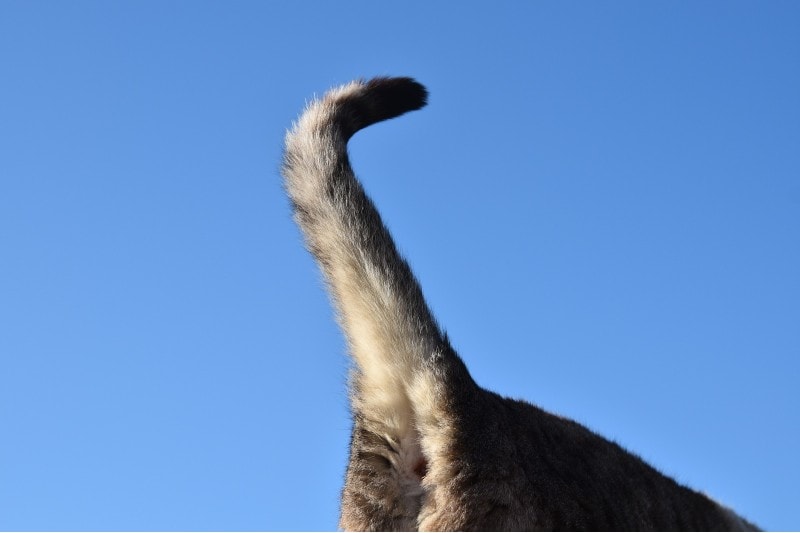
2. Cats Use Their Tails to Communicate
If you’re ever wondering what your cat is thinking, look at their tail! Cats use body language, including tail positioning and movements, to communicate their feelings. If your cat approaches you with their tail up and the tip gently flicking, they’re probably happy to see you. If your cat’s tail is lowered and the tip twitches, your pet is most likely annoyed. A sharply thumping tail often indicates a furious cat.
Cats often curl their tails around people they love—it’s an affectionate greeting reserved for their favorite people. They’ll also wrap their tails around other cats with whom they’ve formed deep bonds. That famous puffy tail look is technically called piloerection, and it’s a sure sign you’re looking at a frightened cat, and a butt wiggle accompanied by a swishing tail often precedes a soon-to-be-unleashed pounce.
3. Wild Cats Don’t Hold Their Tails Up
Lions, tigers, and other wild felines use their tails much as domestic cats do; they even flick the ends of their tails to indicate annoyance. But one major exception to this rule exists! Domestic cats often walk with their tails held high, which is a sign they feel confident and comfortable in their surroundings. On the other hand, wild cats don’t typically walk around with their tails straight up in the air. Most prefer to keep them either between their legs or parallel to the ground during leisurely strolls.
4. Most Manx Cats Don’t Have Tails, but Some Do!
Manx cats are the only genuinely tailless breed, but some of these super-friendly kitties do have tails. Manxes can be found with anything from short to fully formed tails. They’re native to the Isle of Man, an isolated island in the Irish Sea, where the short-tail trait developed due to a spontaneous genetic mutation in the island’s resident feline population. Breeders now engage in selective breeding to produce the trait.
Manx cats’ warm and loving personalities make them popular pets, but the breed has some severe health issues. Manxes and Manx crosses, such as the Cymric, often suffer from spinal deformities and neurological problems linked to the dominant gene responsible for giving breed members their distinctive short tails. Cats born without a tail often have trouble controlling their bladder and bowel functions.
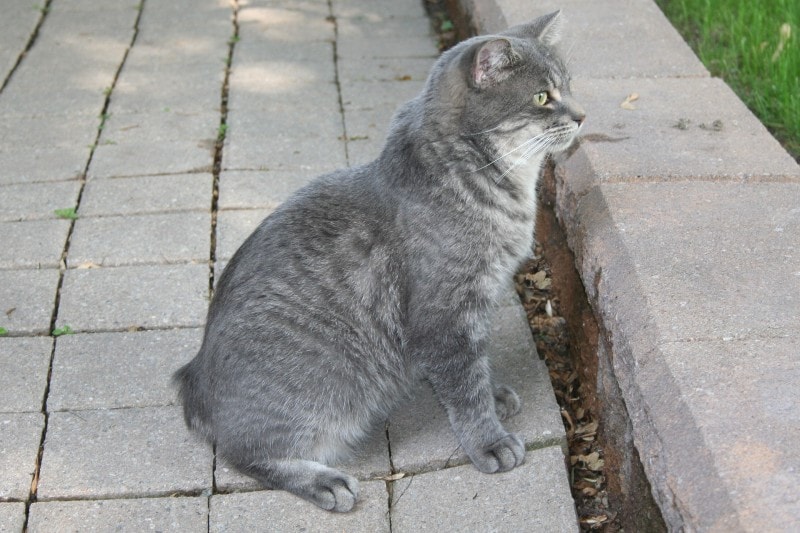
5. A Few Breeds Have Really Short Bobtails
American Bobtail, Japanese Bobtail, Highlander, Kurilian Bobtail, and Pixie Bob cats have short 1 to 4-inch bobs instead of long tails. All these breeds tend to be quite healthy, and none suffer from known breed-specific genetic illnesses.
However, American Bobtails born without tails often develop nerve-based incontinence. Breeders regularly cross Pixie Bobs with domestic cats to maintain a healthy level of genetic diversity in the breed. Japanese Bobtails are descended from feral kitties, and it turns out the species is one of the healthiest breeds.
6. Certain Tail Positions Can Indicate Your Pet Isn’t Feeling Well
Cats use their tails to communicate how they’re feeling mentally and physically. If your cat crouches and wraps their tail around themselves, it could be a sign that they aren’t feeling so well, particularly when combined with other signs of illness, such as a decrease in appetite or normal activity levels.
If your cat continues to frequently sit or lie curled up in their tail, consider talking to a vet, as this position can indicate that your buddy is not feeling well and might even be suffering from pain.
7. Tail Injuries Can Cause Incontinence
The nerves leading to your cat’s tail and hindquarters are largely unprotected after your pet’s spinal cord ends. And the same bundle of nerves that provides sensation to your pet’s tail also connects to your cat’s anus, bladder, and large intestine. Injuries to the base of a cat’s tail often lead to incontinence.
Veterinarians often see this type of traumatic injury in cats who’ve been involved in motor vehicle or tail-pulling accidents. Make an appointment to have your cat examined by a veterinarian if your buddy can’t move or lift their tail. Cats that can’t lift their tails to have a bowel movement often end up with skin conditions that also need treatment.
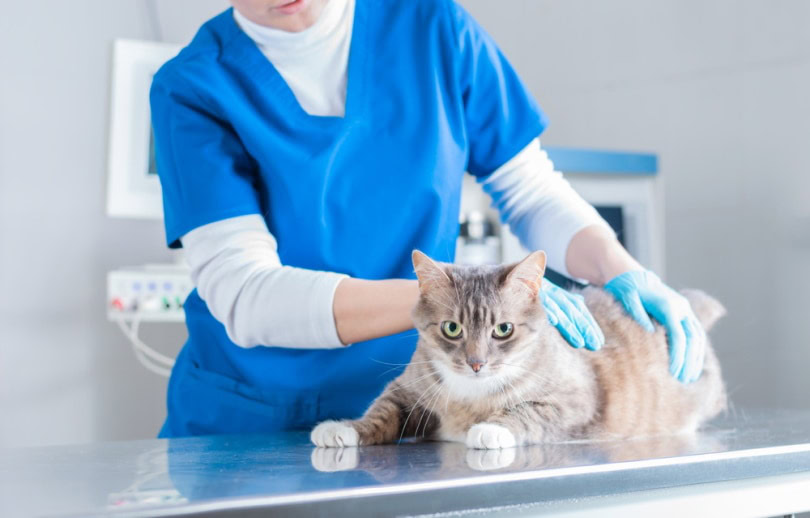
8. Cats Can Be Fine Without Tails
Some cats end up losing their tail as a result of an accident or an infection. The surgical removal of a cat’s tail is called a caudectomy. Many kitties with fully or partially amputated tails initially have a bit of trouble balancing, but most do just fine, learning relatively quickly how to maintain their balance in other ways.
These injuries often occur when a cat’s tail gets caught under a rocking chair, slammed into a door, or pulled or cut by something sharp. Motor vehicle accidents are also common offenders.
9. Cats Use Their Tails for Balance
Cats have exceptional balance! They can race along high railings and reach high perches with stunning accuracy. Cats manipulate their tails to balance themselves and use their last 20 vertebrae as a counterweight when walking on narrow ledges, running, and jumping.
Watch your cat the next time they get the zoomies. Their tail will inevitably go in the opposite direction of where they’re headed, helping their hips and hind legs adjust.
10. Some Cats Don’t Like Having Their Tail Touched
While your cat probably loves to be petted and cuddled, chances are they don’t like when you touch their tail. Cats’ tails are incredibly sensitive; they even have limb-like protective reflexes. While some cats may tolerate or enjoy having their tails touched, many clearly don’t.
Follow your pet’s lead and only pet them in places they enjoy. Tried-and-true purr-inducing spots include under the chin, behind the ears, and on the shoulders.


Conclusion
Cats’ tails are incredibly functional. They use them to balance when cornering and to stay centered when exploring high perches. And cats that lose their tails due to injuries or amputations often have trouble with balance initially but eventually learn to compensate.
While most cats are born with tails, some breeds naturally have no tails, and they do just fine in the balance department!
See Also:
- Why Do Cats Shake Their Tails? Vet-Reviewed Reasons
- Why Does My Cat Thump Their Tail? Reasons & FAQs
- https://be.chewy.com/behavior-pet-facts-10-crazy-cat-anatomy-facts/
- https://resources.pangovet.com/pet-breeds/cats/cat-breeds-with-no-tail/
- https://www.purina.co.uk/articles/cats/kitten/play/cat-anatomy#:~:text=The%20average%20cat%20has%20around,%2C%20spine%2C%20ribs%20and%20sternum.
- https://www.apr.org/arts-life/2016-07-23/tail-of-a-cat
- https://resources.pangovet.com/pet-breeds/cats/cat-breeds-with-no-tail/
- https://www.petmd.com/cat/slideshows/8-unusual-genetic-anomalies-cats
- https://www.apr.org/arts-life/2016-07-23/tail-of-a-cat
- tail/#:~:text=3.,agile%20than%20their%20tailed%20friends.
- https://www.msdvetmanual.com/cat-owners/brain,-spinal-cord,-and-nerve-disorders-of-cats/parts-of-the-nervous-system-in-cats
- https://www.petmd.com/cat/emergency/accidents-injuries/7-common-cat-tail-injuries
- https://en.wikipedia.org/wiki/Japanese_Bobtail#cite_note-:0-3
Featured Image Credit: Vadim Tashbaev, Pixabay
Contents
- The 10 Fascinating Facts About Your Cat’s Tail
- 1. Your Cat’s Tails Is Full of Bones
- 2. Cats Use Their Tails to Communicate
- 3. Wild Cats Don’t Hold Their Tails Up
- 4. Most Manx Cats Don’t Have Tails, but Some Do!
- 5. A Few Breeds Have Really Short Bobtails
- 6. Certain Tail Positions Can Indicate Your Pet Isn’t Feeling Well
- 7. Tail Injuries Can Cause Incontinence
- 8. Cats Can Be Fine Without Tails
- 9. Cats Use Their Tails for Balance
- 10. Some Cats Don’t Like Having Their Tail Touched
- Conclusion
